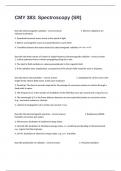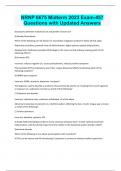Other
Communicable Diseases, Disease Prevention and the Immune System
This is a document that consists of notes for the topic, Communicable Diseases, Disease Prevention and the Immune System, as part of the AS/A level OCR Biology A course
[Show more]







